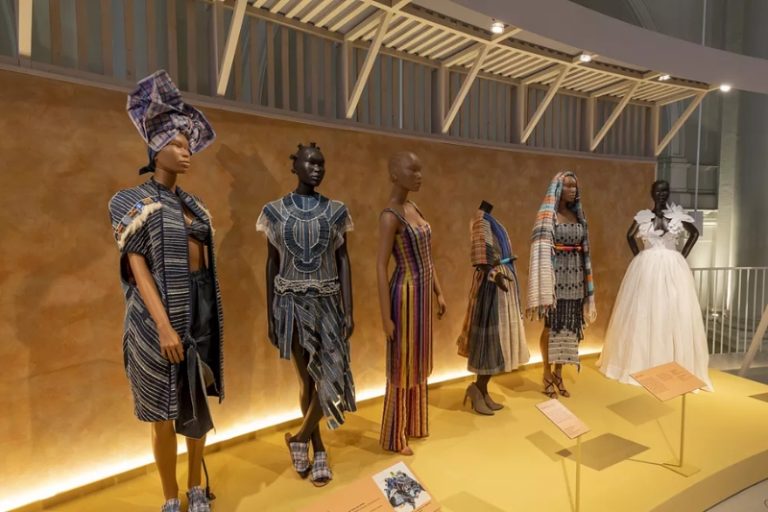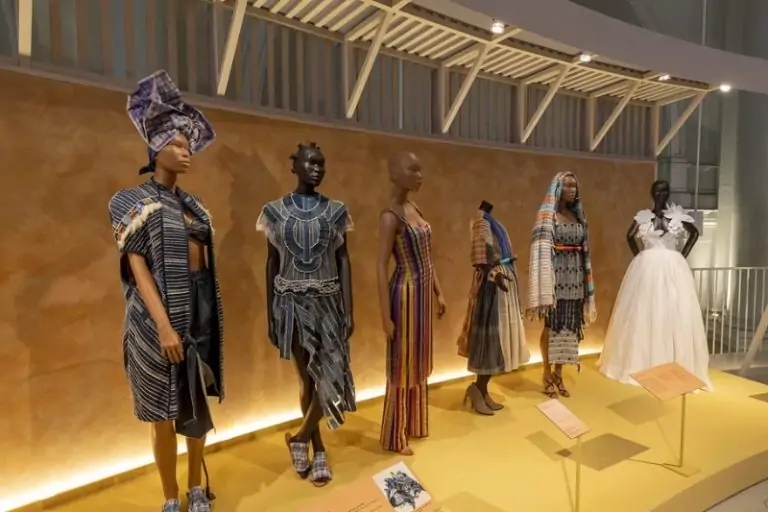

celebrating african fashion a landmark exhibition housed at the vampa museum
African fashion is as varied and inventive as the continent itself. Now, as part of the United Kingdom’s most comprehensive display of Africa’s fashion to date, Africa’s many gifted designers, models, photographers, illustrators, makeup artists, and other professionals take the stage.
Celebrating the “irresistible creativity, ingenuity, and unstoppable global impact of contemporary African fashions” via the prism of 45 designers from over 20 nations, “Africa Fashion,” on view at the Victoria and Albert Museum (V&A) in London, honors
Among the more than 250 artifacts on display are clothing from the personal archives of some of the most famous mid-20th-century designers from Africa. Among them are Nigerian fashionista Shade Thomas-Fahm, Chris Seydou, “the father of African fashion,” Ghanaian inventor Kofi Ansah, and Alphadi, “the magician of the desert.”
Through images, video, editorial spreads, sketches, and other relics, the show also chronicles more modern designers and creatives including Imane Ayissi, IAMISIGO, Moshions, Thebe Magugu, and Sindiso Khumalo. Maison ArtC headquartered in Marrakech created a fresh piece especially for the show “A Dialogue Between Cultures.”
Though fashion from Africa is the main focus, according to Christine Checinska, the senior curator of African and African diaspora textiles and fashion, the show explores the “inner spirit” of Africanness that cuts across geographical boundaries.
Beginning with the period of Africa’s independence—roughly the 1950s to the mid-1990s—the show investigates, alongside art and music, the part fashion has contributed to the cultural rebirth of the continent. It also looks at how African fashion has lately been brought to a worldwide audience by social media, digital technology, and celebrities.
Checinska says Christine Ajudua of Artnet, “African designers are changing the whole language of fashion.” “African creatives are doing things in their own way and the fashion industry is turning toward Africa.”
Established in 1852, the history of the V&A is closely entwined with British colonization across Africa. From African villages, colonists pilfers many of the most important objects in the collection of the museum as well as in other well-known British museums; in 1868, for example, British soldiers stole the so-called Maqdala treasures during an invasion of Ethiopia.
More generally, African inventiveness has been mostly “excluded or misrepresented in the museum, owing to the historic division between art and ethnographic museums arising from our colonial roots and embedded racist assumptions,” Checinska tells Agence France-Presess. But the exhibition “could be seen as part of a wider move to acknowledge these histories, and to bring a more diverse range of voices into the institution,” Lauren Cochrane notes for the Guardian.
Checinska agrees and notes that the show is well overdue. To guarantee they got the exhibition right, museum staff members spent two years consulting designers, outside experts, young people from the African diaspora, and a multi-generational community panel.
“It is a moment of transition that marks the commitment we have to celebrate African creativity across the board,” Checinska told the Guardian.
Through April 16, 2023 the Victoria and Albert Museum exhibits “Africa Fashion”.
The U.S.-based driver training company Zutobi analyzed road safety worldwide and found South Africa stays last in driving danger since…
The Basketball Africa League (BAL) returns for its 2025 season with exciting changes and developments. Since 2019 the NBA-linked basketball…
The Somali president supports their military forces to eliminate the threats from Al-Shabaab, ISIS, and Al-Qaeda. The Somali National Army…
UAE President Sheikh Mohamed bin Zayed Al Nahyan held talks with President Faustin Archange Touadéra of the Central African Republic…
African football teams struggle intensely in the World Cup Qualification rounds to earn their place on the international football stage.…
The journey toward the 2026 FIFA World Cup is rapidly intensifying for all African teams, who now hold a historical…
This website uses cookies.